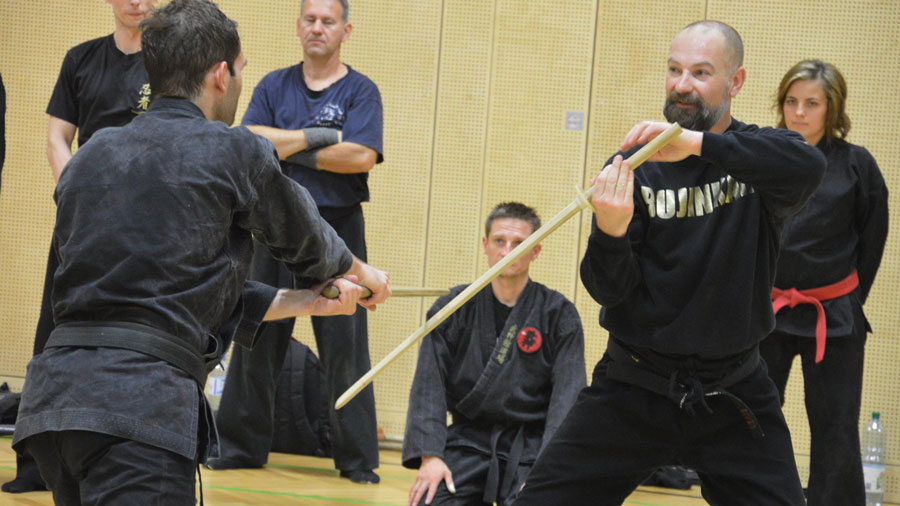First I have to say, that Duncan Stewart, changed from ground up, my understanding of Bujinkan Budo Taijutsu. How to train Kihon with the right attitude, the role of being a good Uke, and how to develop a good and strong heart. He is the teacher, who has a strong influence on my personal development, as a martial artist, over the last years.
Because of the eventful days, I want to share my experience of the last weeks. So if you have some time, sit back, get some coffee and enjoy a little read. I remember Sveneric Bogsäter often mentions, “Budo is for sharing”, so I want to do that today. As Duncan moved back to Tasmania, now living in the „far far away land “, we made it possible, together with other countries, to invite him back to Europe, for some seminars. Zoran and me were able to travel to Göttingen, where Oliver and Beate where caring and perfect hosts, who made our stay, as comfortable and relaxed as possible. Two weeks later, Duncan came to Vienna, to stay for five days. We had time to catch up, share experience and trained a lot together.
Some points, which I have to develop over the next years to come, felt very important to me. Often when you think you understand things cognitively, it takes time to transmit it into your Taijutsu. It is like a slow wire, where over time, the information can be processed, through constant training and hard work.
Kihon
The Kihon is there to develop the understanding of rhythm, distance and timing. You learn from the basic training, how to move and use proper angles, to make your technique work. Your Kihon training starts with yourself. How you train alone. Your Ashi sabaki (legwork), Te sabaki (handwork) and your Tai sabaki (Bodywork). If you train your Kihon Happo, Sanshin no kata etc., you should take your time, just practicing it by yourself. Slowly and aware of every movement, to develop confidence in your body and heart. There should be no change in your form, when you do it later with an Uke. But you will see, in the beginning, if you do it with a partner sometimes, it looks like a whole new technique. Through constant training, there should be less and less difference, if you do it alone or with an Uke.
As everyone knows, there are a lot of teachers in Bujinkan. Different variations of Kihon, but when you watch closely, if there is a reason behind every movement, and if it works, then key points are all the same. There is not just one way. We have to be open minded to see the bigger picture. If you understand, and integrate those key points, learned from a form, then you can do Henka. Where in my opinion Bujinkan gets more alive. You should also train basic techniques in Chudan, Jodan and Gedan levels. Add weapons to it. If you want to do a Henka, in a more realistic approach, your Uke should attack in different ways. Not just a strait punch, because most of the people nowadays, learn other styles. You cannot know the background of your attacker in a real life situation, so you need to adapt your training because of that reason.
The theme was Jin Ryaku no Maki and Daisho in Vienna. It is important to have the right distance in the techniques. As soon, as you do it with Daisho, and you hit your opponent not on purpose, with your Saya, you will know why. These techniques, depending on their background, developed under different circumstances. You will understand some of them better, if you think out of the box. Some of them are not meant to be trained, just on a flat ground.
„Every step is important. Proper angles and Kamae, makes a techniques work “
Balance, Training Progressions
You can take the balance mentally and physically. You have to control, the upper body and lower body of your Uke. When you make Henka, in the beginning you should think about what your Uke can do next, after your last movement. Your Uke allows you to move him, and to try out your ideas. After time, if you are more advanced than you will have to train differently. In advanced training your Uke will attack you where he feels the opening and you will have to react on it. To be able to do that you have to start slow in training, move, stop a think, during each action. Your Uke is there to assist you in training.
Enjoy your journey, there is always more to learn.
Roman Freistetter


